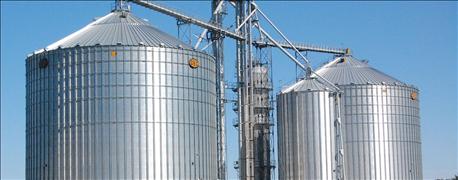April 29, 2015

When planning an on-farm grain storage system, one of the most important steps is taking into account future expansion needs, according to Gary Woodruff, conditioning applications manager for GSI.
Related: Making grain storage decisions easy
"Farmers should always assume there will be growth in yield and bushels," Woodruff says. "Always anticipate expanding and have a well-thought out plan that factors in growth and future technology changes."
Woodruff recommends:
•Always leave space for future installation of additional bins.
Do not assume that your wet holding capacity will always be adequate. Once you start drying more grain, additional wet bushel storage capacity will be a necessity.

Five tips for planning a new grain storage system
•Create a traffic pattern for separate grain dumping and loading stations to increase efficiency. Being able to load and unload grain simultaneously will decrease your total harvest time, thus saving money.
•Future expansion of both drying and wet storage must be part of the initial design. Choose an in-bin or out-of-bin high capacity drying system to match your farm needs. As the total number of bushels increases, plan on adding a higher capacity dryer or a second one.
Grain Handling & Storage Tips
A key component of the grain management and marketing equation is storage. Should you store most of your new crop and wait for a better price? Or, should you aggressively market in the fall? While the answer isn't the same for every farmer, those considering short- or long-term storage will likely need to sit down and run the numbers before settling on the most profitable option.
•The different kinds of grain to be stored will determine the number of bins needed. If you are storing three types of grain, you will need three bins, even though the sizes will vary. Rather than putting a large quantity of one grain in a single bin, it may be better to invest in two or three smaller bins, which will be easier to manage and offer more flexibility.
~~~PAGE_BREAK_HERE~~~
•Storage location is another key factor, according to Woodruff. An on-farm grain storage system ideally should be located on a state highway that allows farmers to haul grain year-round without road restrictions. A good highway site should either have access to natural gas, which is the most economical fuel source, or allow easier delivery of the more available LP gas.
A highway location is also more likely to have three-phase power available, which allows operation of much larger machines and motors. For smaller systems, single phase power may be sufficient, but more power will be needed as the system expands.
He adds that farmers should locate the system near their fields, which will reduce transportation time and fuel cost, and ultimately can lead to a cut in the number of trucks needed.
Grain Handling & Storage Tips
A key component of the grain management and marketing equation is storage. Should you store most of your new crop and wait for a better price? Or, should you aggressively market in the fall? While the answer isn't the same for every farmer, those considering short- or long-term storage will likely need to sit down and run the numbers before settling on the most profitable option.
"No two farms are exactly alike, which is why a grain storage system must be designed to meet each farm's current and future needs," Woodruff says. "A poorly designed on-farm grain storage system may increase labor, reduce efficiency and create safety issues that a well-planned system avoids."
Source: GSI
You May Also Like




